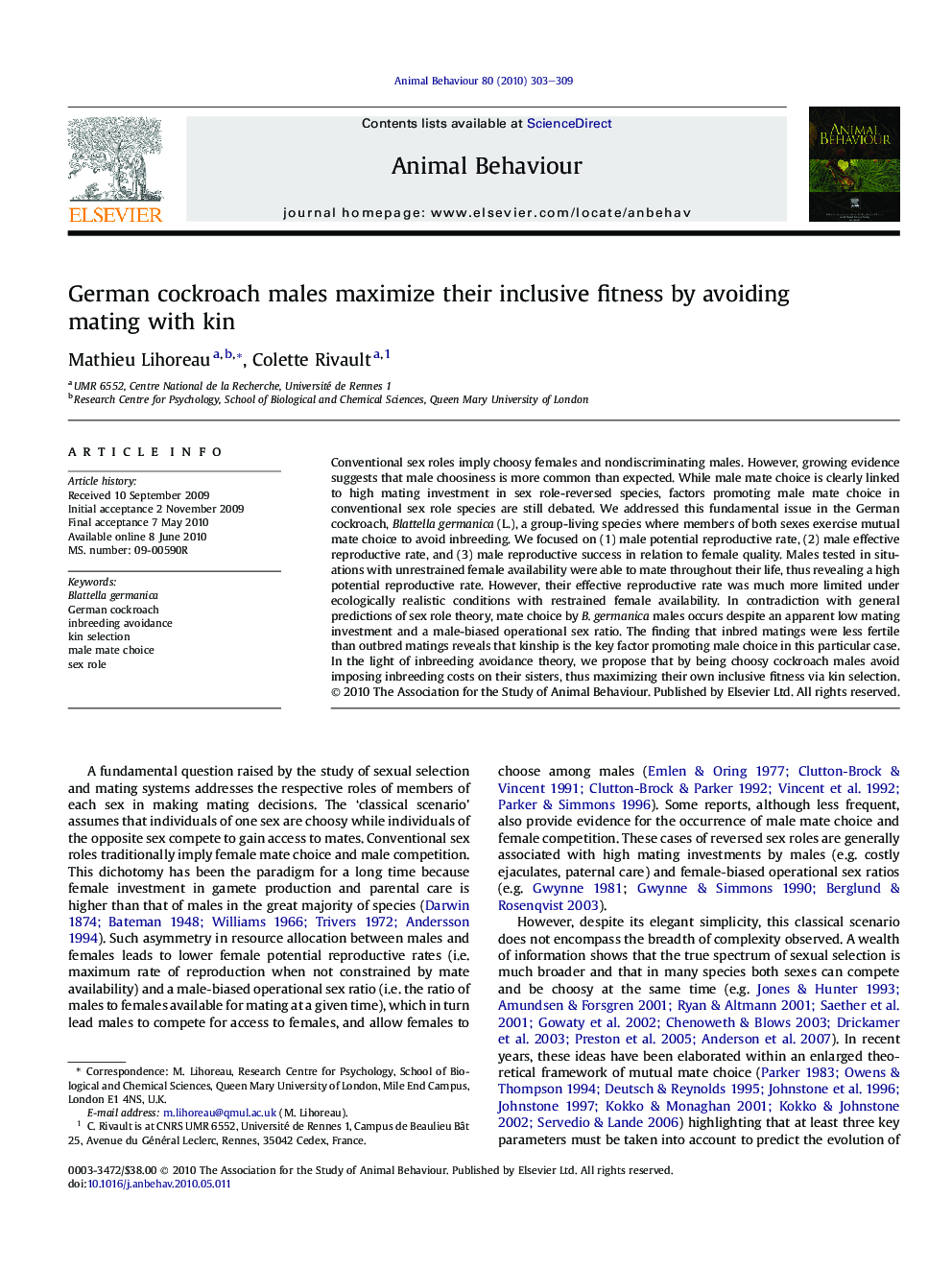| کد مقاله | کد نشریه | سال انتشار | مقاله انگلیسی | نسخه تمام متن |
|---|---|---|---|---|
| 2417150 | 1104310 | 2010 | 7 صفحه PDF | دانلود رایگان |

Conventional sex roles imply choosy females and nondiscriminating males. However, growing evidence suggests that male choosiness is more common than expected. While male mate choice is clearly linked to high mating investment in sex role-reversed species, factors promoting male mate choice in conventional sex role species are still debated. We addressed this fundamental issue in the German cockroach, Blattella germanica (L.), a group-living species where members of both sexes exercise mutual mate choice to avoid inbreeding. We focused on (1) male potential reproductive rate, (2) male effective reproductive rate, and (3) male reproductive success in relation to female quality. Males tested in situations with unrestrained female availability were able to mate throughout their life, thus revealing a high potential reproductive rate. However, their effective reproductive rate was much more limited under ecologically realistic conditions with restrained female availability. In contradiction with general predictions of sex role theory, mate choice by B. germanica males occurs despite an apparent low mating investment and a male-biased operational sex ratio. The finding that inbred matings were less fertile than outbred matings reveals that kinship is the key factor promoting male choice in this particular case. In the light of inbreeding avoidance theory, we propose that by being choosy cockroach males avoid imposing inbreeding costs on their sisters, thus maximizing their own inclusive fitness via kin selection.
Journal: Animal Behaviour - Volume 80, Issue 2, August 2010, Pages 303–309